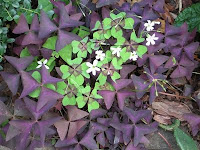The Sunday Leader Herald published an interesting article in early April that was written by Dean Fosdick of the Associated Press. I thought this was well worth sharing with you all and it is entitled 10 common gardening mistakes.
Gardening is a forgiving hobby. You can always right any wrongs next growing season. The best way to prevent problems though, is with good planning. “Designing from the top of your head may work, but things most likely will work better if you write it down and do a simple drawing” said Jack McKinnon, a garden coach from San Francisco. “Think before you plant”. Most gardening failures result from simple things, he said. “like people who don’t fertilize, or if they do, put on to much. The same goes for people who don’t understand watering or add too much. Many tend to do their pruning with power tools and then overdo it”. Here are ten common gardening mistakes and ways to avoid them.
One: neglecting soil preparation. Test plant beds before you begin and again every few years to see if soil conditioners are needed. Add sand or peat moss to compacted, poorly drained ground to improve its
structure and encourage root growth.
Two: Overplanting. Design with the size of mature plants in mind. Try succession planting in which early, cool-weather crops are harvested before later, less hardy plants reach maturity.
Tree: Flawed feeding. “mulch plants and they’ll be so much happier” said Tia Pinney, adult program coordinator at the Drumlin Farm Wildlife Sanctuary, in Lincoln Ma. “Supplement your soil, don’t just fertilize it”
Four: Improper watering. Too much water can be just as damaging as too little. Do a finger in the ground test to ensure the soil around the roots is most. Vegetables need about an inch and a half of water a week.
Five: Wrong location. Growing conditions change as trees and shrubs mature, creating different shadow patterns. Most plants need six to eight hours of sun a day to develop.
Six: Improper pest control. Don’t kill the good bugs, like pollinators, in an effort to eliminate the bad. “one thing we hear a lot is an attitude of ‘All I have to do is spray and that will cure it” said Mary Ann Ryan, master gardening coordinator with Penn State, Cooperative Extension in Adams County, Pa.
Seven: Faulty maintenance: Don’t set your cultivator (or hoe) too deep, damaging plant roots. Pull some weeds by hand.
Eight: Over pruning. As a rule, don’t remove more than 30 percent of the foliage from shrubs in one cutting. And don’t ‘top’ trees to control their height. ‘That reduces their life span rather than improves their health”, Ryan said.
Nine: Botched planting. Choose the right plant depth. “I know of one property where they put a tree with its root ball on the surface of the ground and then mulched around it up to the level of the trunk”, Ryan said. “People don’t know how to plant”.
Ten: Failing to start over. “Oftentimes, people let diseased things grow that should be pulled out, and it affects the health of the entire crop”, McKinnon said. Start with a small plot so you can correct mistakes more easily, the experts say. And look to your county extension office for support if you run into trouble. Garden coaches also can diagnose problems and suggest remedies, as can master gardeners and landscape designers.
Our next meeting is on Thursday, May 5 when Bonnie Preston will discuss what makes a good design and will talk about how to handle those small and awkward spaces that pop up in our gardens.
As always if you have questions drop us a line at POBox 675, Northville, NY 12134.







Barbara,
ReplyDeleteI have a question about the the worms that bore into my squash.
I was told that to avoid some of the insects to NOT plant until June 1st.
Does that mean I have to put the seeds in the ground after the first - or can I keep the plants inside until after the first then put them in the ground?
Thanks
-B
The moths that lay the eggs that turn into grubs that bore into the squash family typically stop flying/laying eggs by the first week or so in June. You have two choices; you can wait to plant out your squash etc plants until around the second week in June. And that is not a bad thing because squash plants love warm weather and planted directly into warm soil they will really take off. Yes, you can start them inside about two weeks before planting outside. Or, secondly, you can plant out early if you have warm soil (you can use black plastic to warm the soil for a week or so before planting) and then cover them with plant fabric so that the moths cannot get to the plants. I prefer not to use insecticides but if you want to you can use Seven and dust the plant with that to kill any eggs that might be laid. If you see any eggs, just brush them off with your hand. If you see sawdust like material at the base of your plants then that means a grub has gotten in so you make a longitudinal slit in the stem and pull out the grub. Bury the stem in soil and the plant will continue to grow without much of a hitch.
ReplyDeleteIf you are planting directly with seeds, then you should be fine to plant the seeds around the end of May when the soil has warmed up.
Good luck – and I am always happy to answer your questions.
Regards,
Barbara